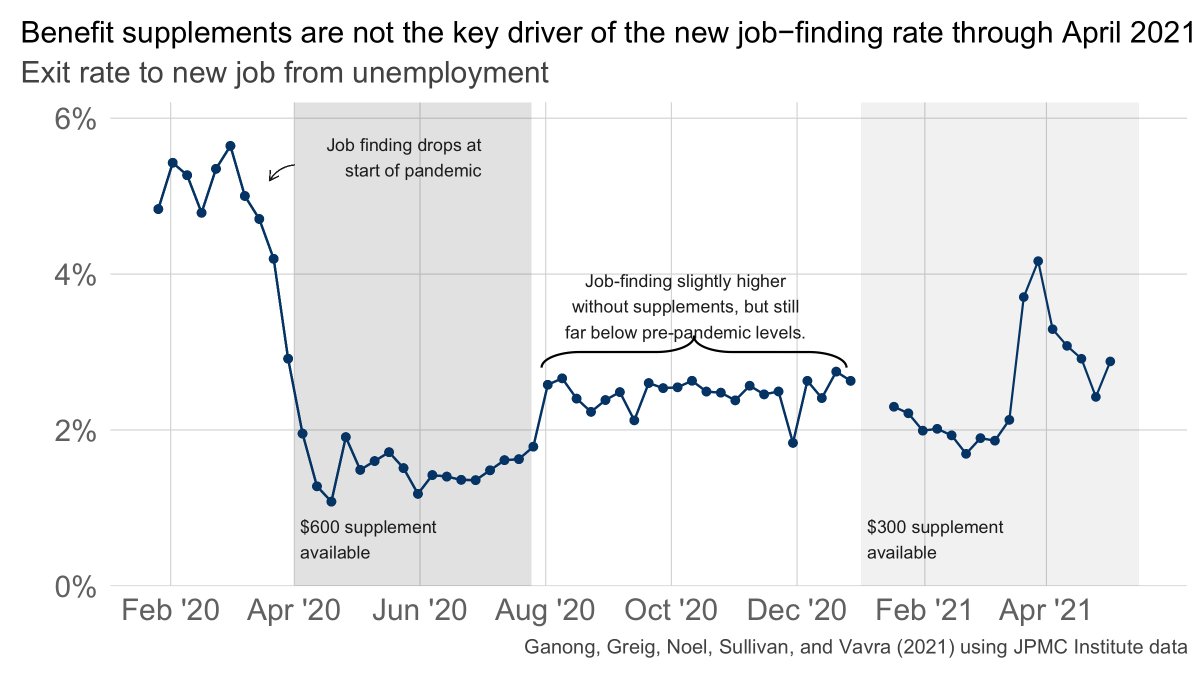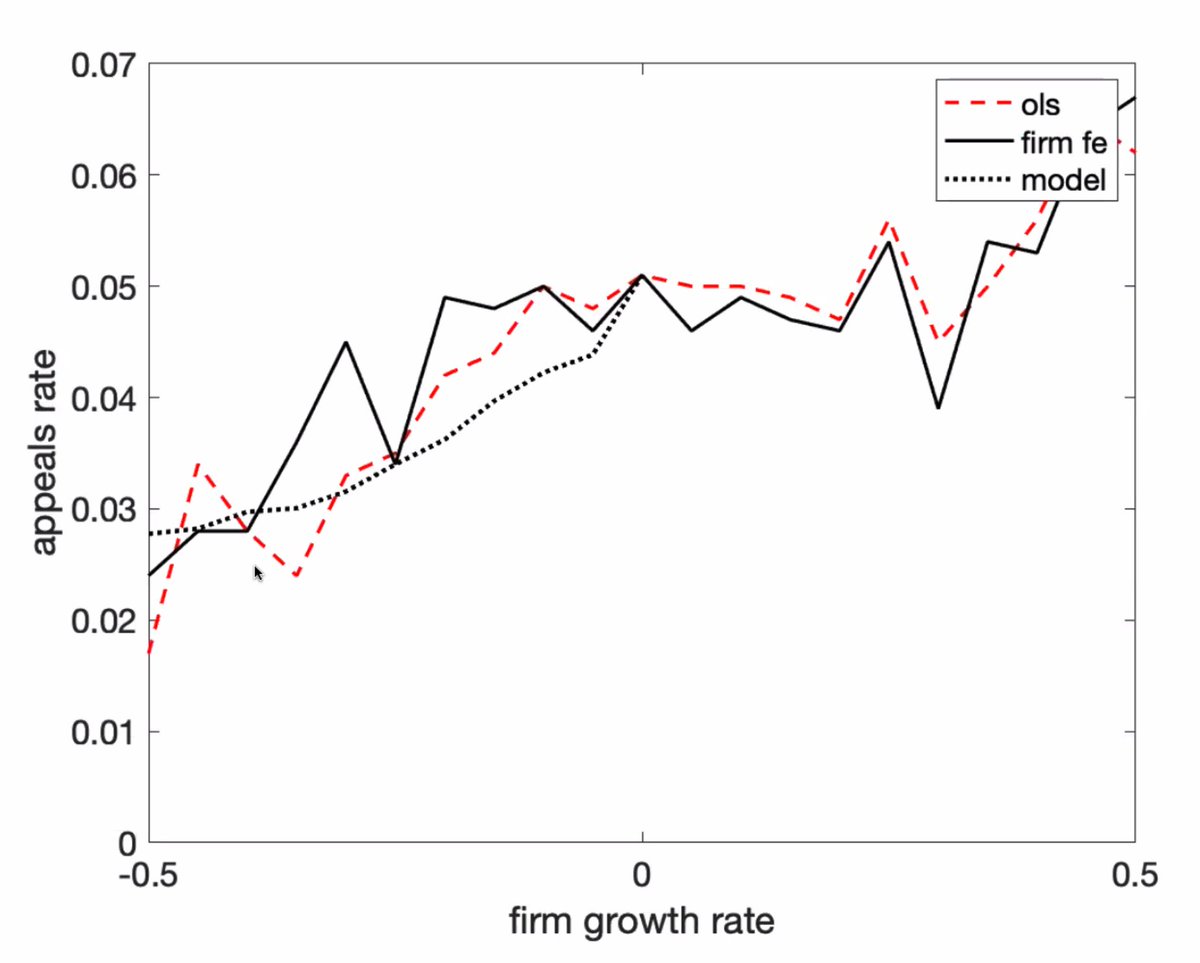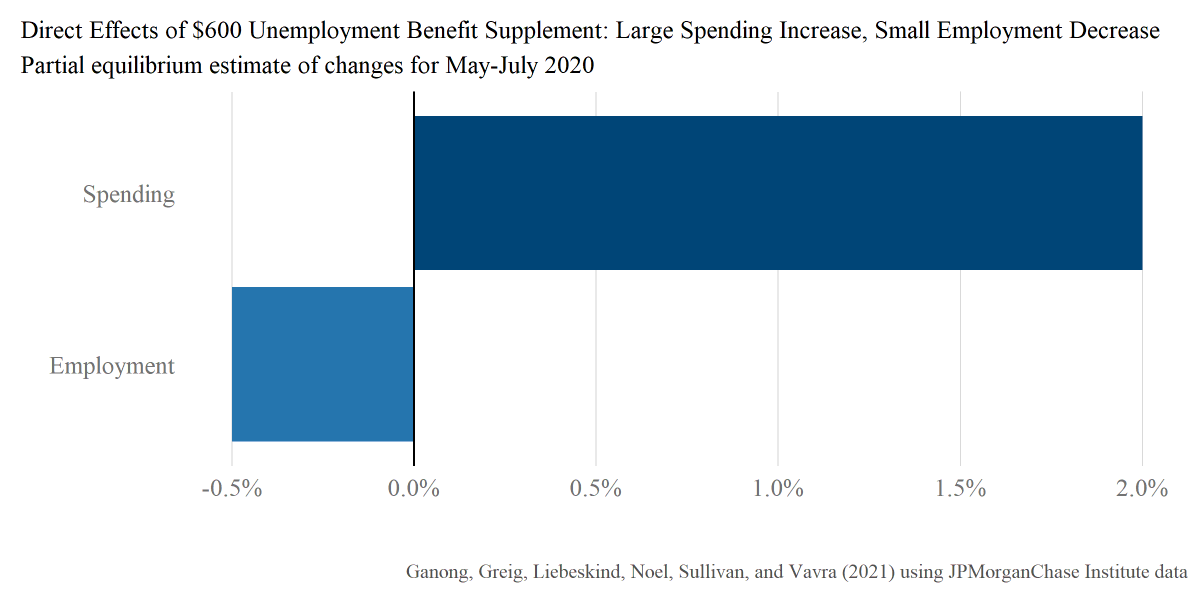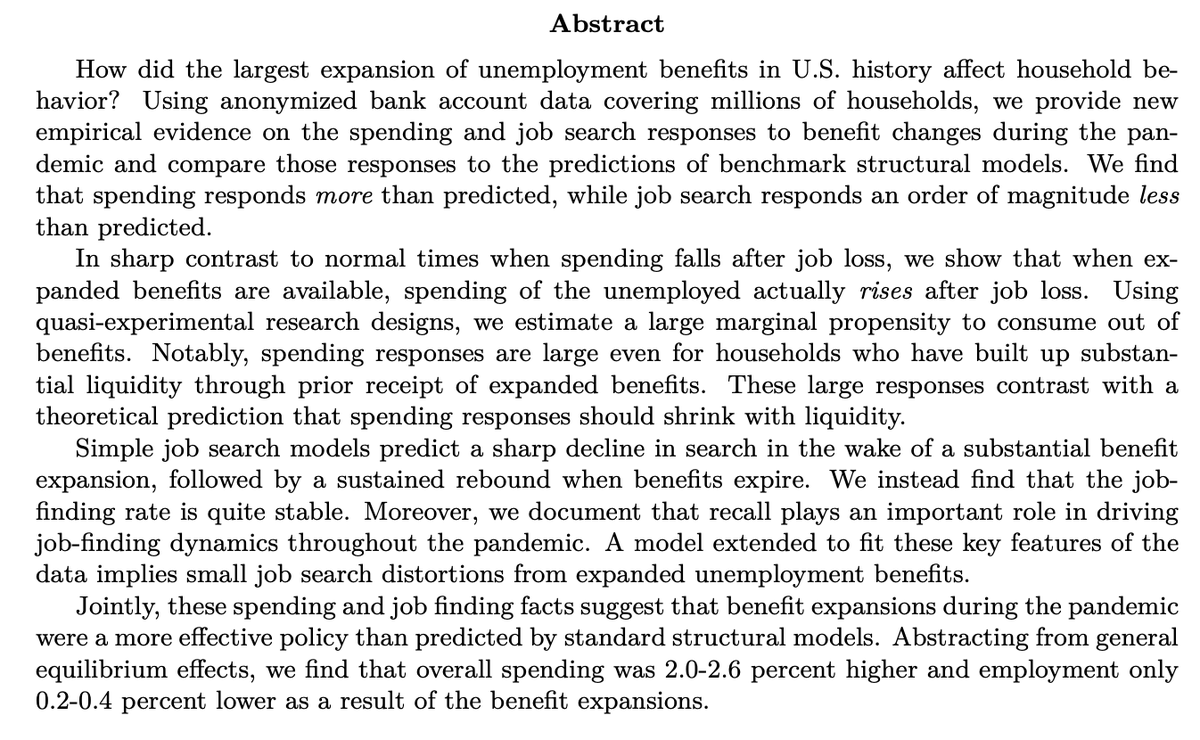
Tomorrow is jobs day and everyone wants to know how early cut off of pandemic benefits will affect employment
I can tell you the answer tonight... you won't learn anything tomorrow‼️
no state data are released ‼️
🧵 on evidence from 5 other data sources that *are* by state
I can tell you the answer tonight... you won't learn anything tomorrow‼️
no state data are released ‼️
🧵 on evidence from 5 other data sources that *are* by state
TLDR: four data sources point to no significant/detectable effect, one data source finds a decrease in employment. issues with parallel trend assumptions and inference are plentiful though.
1) The BLS releases state-level employment estimates based on the establishment survey two weeks after the national numbers. For July data, have to wait until August 20. Analysis of the June state-level estimates is here. Looks like a noisy zero.
https://twitter.com/p_ganong/status/1416160296201334786?s=20
2) @arindube analyzes the Census Household Pulse Survey and also finds a noisy zero. arindube.com/2021/07/18/ear…
This is my second-favorite estimate because (a) representative sample and (b) has standard errors. My one quibble is that in HPS it looks like cutoff and non-cutoff states are close in terms of level and trend before cutoff. this is not borne out by more precise BLS data.
3) @aaronsojourner finds that regular UI claims (those not cut off by the end of pandemic programs) are similar in states with and without cutoff. So labor market doesn't seem stronger or weaker by this measure.
https://twitter.com/aaronsojourner/status/1420118208825151499?s=20
4) Payroll processor @GustoHQ has no net effect on employment and some puzzling results by age. Note that employment in this series is very volatile.
https://twitter.com/byHeatherLong/status/1420028562141220884?s=20
5) Covid-19 data all star @homebase_data finds that employment grew faster in states that did not cutoff benefits
https://twitter.com/homebase_data/status/1422317210941345792?s=20
An important caveat to estimates (2)-(5) is that they assume parallel trends between cutoff and non-cutoff states. This is probably the wrong assumption -- non-cutoff states grew faster than cutoff states from Jan to May.
https://twitter.com/p_ganong/status/1416160335619366912?s=20
An important caveat to estimates (3)-(5) is that they don't have standard errors! Traditional sampling uncertainty doesn't exist since these are population estimates, but visual inspection indicates that all three series are highly volatile.
Hard to know what is and is not significant. Maybe we can turn permutation test #econtwitter (looking at you @economeager!) on this problem to try to construct some intervals
If I've missed an estimate in my round up here, please post it in the comments.
If I've missed an estimate in my round up here, please post it in the comments.
• • •
Missing some Tweet in this thread? You can try to
force a refresh










